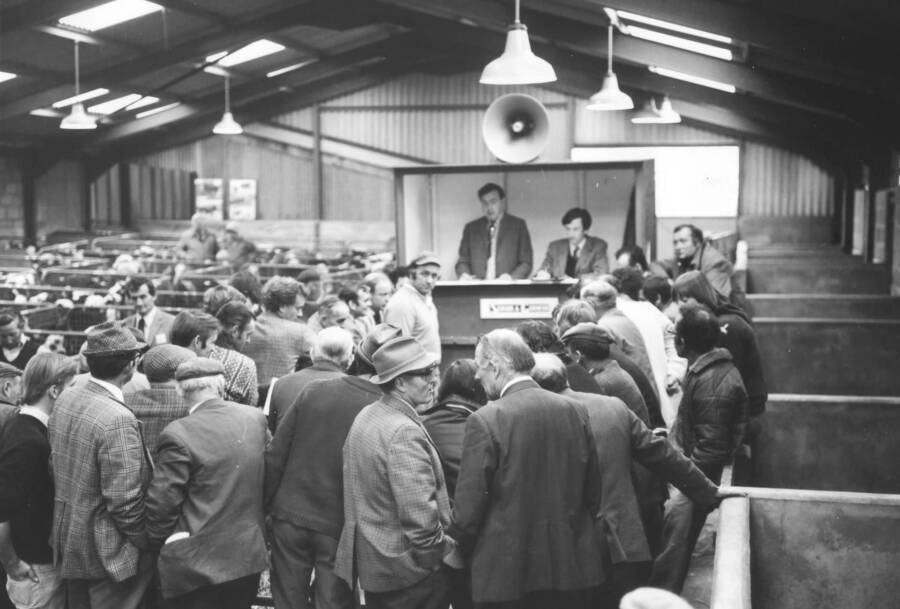Sturminster Newton Mill owner Pete Loosmore has supplied over 300 bags of flour to local grocers thus far.

Sturminster Newton MuseumThe earliest record of the Sturminster Newton Mill dates to 1086.
The Sturminster Newton Mill in Dorset, England became a museum once operations ceased in 1970, but has remarkably returned to its former flour-making glory to meet increased demand during the COVID-19 pandemic.
According to Ancient Origins, the mill was first mentioned among 6,000 flour mills in the Doomsday Book of 1086. The building, which sits on the River Stour and was originally built during the Anglo-Saxon period in 1016, was last reconstructed in the 18th century.
The mill is typically only operational during tourist season to educate museum-goers. Owner Pete Loosmore — whose grandfather was its miller for 50 years — and colleague Imogen Bittner usually get through only around one ton of grain during that visitor-heavy period.
That all changed when local grocers reported food shortages as a result of the coronavirus lockdown.
“This year we have got through the whole of that ton in two to three weeks and we’re still chasing more and more grain,” he told the BBC. “It’s been nice to bring the place truly back to life and back into something like it used to be when it was working six days a week.”
Watermills were originally developed during the Hellenistic era. The horizontal wheel mill was invented in the Byzantine Empire, while its vertical counterpart was built in Alexandria, Egypt around 240 B.C. The ingenious technology spread rapidly through Europe once the Romans adopted it.
When the Roman Empire came to an end, monks and lords continued to build mills throughout the Middle Ages and Early Modern period. They not only refined the technology but used it as a main source of power. Naturally, it was left by the wayside once the Industrial Revolution arrived.
For Pete Loosmore, kicking the Sturminster Newton Mill back into gear “has been a pleasure.” He helped restore its machinery 26 years ago and is fairly thrilled at no longer exclusively providing heritage tours.
The quarantine effect has had more people baking their own bread at home. Though Loosmore initially believed the lockdown would only hamper his seasonal tourist activity, it actually served as an opportunity to bring his business back to life.
Everyone baking bread needs a supply of flour, after all.

Sturminster Newton MuseumThe mill was fully operational for commercial purposes until 1970, at which point it became a heritage museum.
“We would have been milling, on the whole, about two days each month,” he said. “That would have supplied us with enough flour to keep going throughout the whole of the season.”
“And then suddenly we had lockdown — and our first impression was that we couldn’t do anything with the mill because of social distancing.”
As it stands, Loosmore and Bittner have supplied an estimated 300 bags of flour to local businesses, from convenience stores to mini-marts. Fortunately for the resourceful pair, the unexpected demand will keep their mill afloat as this year’s tourist season will likely be nonexistent.
“We’re only doing this while the crisis lasts and it’s not only helping us but the local community because there is a shortage of flour,” said Bittner.
For the Sturminster Newton Mill itself, which inspired the Thomas Hardy poems “Overlooking the River Stour” and “On Sturminster Footbridge,” the humble flour-producer will hopefully only grow in popularity once this is all over.
After all, it’s been here for 1000 years — and still providing the people with what they need to make food.
After learning about the ancient British mill returning to business to meet increased flour demand, read about the German zoo which might feed its animals to each other to stay afloat financially during the pandemic. Then, learn about scientists warning of the swarms of “rat armies” suffering under coronavirus.





